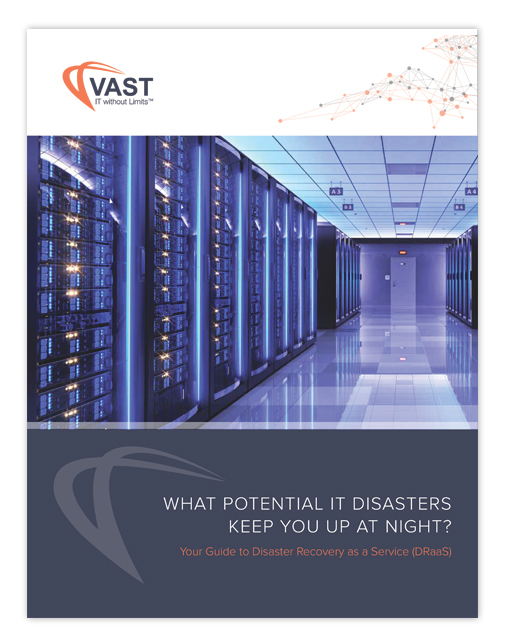Organizations migrating to the cloud stand to gain multiple benefits. The cloud offers access to advanced technology, virtually limitless scalability, and cost-effective methods of addressing business objectives. Companies can provide enhanced data accessibility and support for mobile employees by leveraging cloud resources.
Companies migrating applications or infrastructure to the cloud may face challenges that threaten to minimize the potential advantages of the move. Customers commonly encounter the following challenges in cloud migrations. An organization must address these difficulties effectively.
Failing to Define Business Objectives
A company considering cloud migration should have clear business objectives for the move. Management should not initiate a migration without legitimate business reasons. The failure to define objectives can doom a project from the start.
Different businesses may have varying objectives driving their interest in cloud migration. Examples of valid reasons to consider cloud migration include:
- Modernizing the IT environment without the capital expenditures associated with upgrading an on-premises infrastructure;
- Taking advantage of the advanced technology available from cloud service providers (CSPs);
- Streamlining remote access to corporate data for a mobile workforce;
- Increasing resiliency by leveraging the geographically distributed nature of cloud resources.
Selecting the Right Cloud Provider and Services
An organization needs to choose the right cloud provider and portfolio of services to address its defined objectives. A company can make these decisions more effectively when operating with well-defined business objectives. Decision-makers must choose the providers and services based on their ability to meet the company’s requirements and expectations.
Companies should take the following measures when selecting CSPs and specific services.
- Choose a CSP whose services align with the business objectives.
- Evaluate similar offerings from multiple CSPs to compare services, support, and pricing.
- Favor providers that offer flexibility and scalability to handle evolving business requirements.
- Consider implementing a multi-cloud or hybrid computing environment to address divergent objectives and avoid potential vendor lock-in.
Maintaining Data Security and Privacy
Migration often involves transferring and storing valuable and sensitive data on cloud-based storage resources. Moving data to the cloud can introduce new vulnerabilities and risks like data breaches or unauthorized access. Companies leveraging cloud storage must ensure it meets data privacy compliance standards.
Organizations can take the following precautions to minimize the data security and privacy risks that are possible with cloud migration.
- Customers need to ensure encryption is implemented for all data at rest and in transit.
- Management should assess the benefits of a hybrid infrastructure where on-premises systems are used to store and process sensitive information.
- Implement periodic audits of the cybersecurity posture.
- Perform regular penetration testing to identify vulnerabilities.
- Verify the CSP is certified for compliance with regulations such as HIPAA or PCI-DSS affecting corporate data resources.
Integrating Legacy Systems and Applications
Legacy IT systems may be incompatible with the cloud environment. Companies may have difficulties moving data or applications to the cloud. The move may require modifying existing systems to achieve compatibility. The modifications can add significant time and complexity to the migration project.
Organizations can limit the challenges of integrating legacy applications and systems by adopting the following strategies.
- Assess legacy systems and potential compatibility issues when defining the migration objectives.
- Consider re-platforming applications to take advantage of cloud resources.
- Implement cloud integration tools and APIs to overcome compatibility issues.
Minimizing Downtime
Companies can experience downtime and disruptions to business operations during cloud migration. Data resources may be unavailable to employees and customers while it is being migrated. Minimizing these disruptions is essential to a successful migration project.
Companies can limit downtime by implementing the following safeguards.
- Perform a phased migration scheduled at off-peak hours to minimize the impact on customers and internal productivity.
- Test the migration using non-critical data to identify and resolve issues before they lead to disruptions.
- Develop a recovery plan to roll back the migration if serious problems occur.
- Adopt a deployment strategy with two identical environments to enable continued business operations during the migration.
Managing Data Migration Complexity
Large volumes of data typically need to be moved in cloud migration. It can be very challenging to migrate the data while ensuring its integrity and minimizing operational downtime. Organizations can employ several tactics to address data migration complexity.
- Utilize dedicated cloud migration tools available from the CSP or reputable third-party vendors.
- Verify the migration procedures using test data before moving business-critical information.
- Perform validation during and after the migration to ensure data consistency.
- Use different cloud storage tiers to optimize data access and minimize costs.
Addressing Skills Gaps
Organizations may lack the in-house skills to optimize cloud migration and subsequent operations. Skill gaps can result in migration errors or inefficiencies. In some cases, employees may be reluctant to adopt the new processes and tools required by cloud computing.
Companies can address cloud skill gaps using several methods.
- Invest in employee training to close specific skill gaps.
- Communicate the business benefits of the migration and endorse the changes caused by the migration.
- Engage experienced cloud experts or consultants to augment internal technical resources.
How VAST Minimizes the Challenges of Cloud Migration
VAST IT Services has extensive experience in cloud migration and partnerships with all the major providers. We’ve helped businesses of all sizes move single applications or complete environments from on-premises infrastructures to the cloud. Our experts can assist your company in every step of the migration process to ensure a smooth and productive journey to the cloud.
VAST offers end-to-end cloud migration services that optimize the process and protect your company’s data security. Our offerings are designed to help overcome cloud migration challenges and include the following services and solutions.
VAST’s cloud discovery and assessment services provide deep knowledge of the systems undergoing migration. The assessment includes an application inventory, allowing us to identify the right cloud delivery model to align with your business objectives.
Our migration planning services help you create detailed plans and streamline the process while minimizing risk. After developing viable plans, our teams assist in migration execution and post-migration validation and testing.
Let us help you address the challenges of cloud migration. Contact us today to get started.



